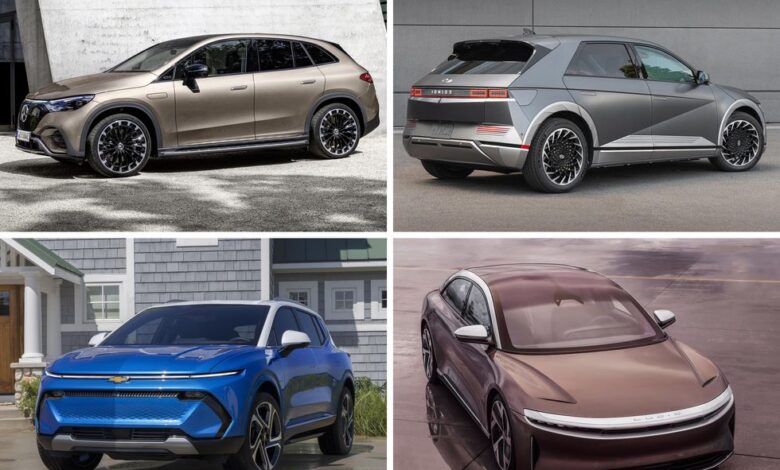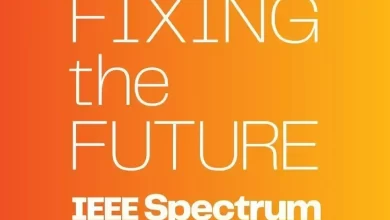Convincing Consumers To Buy EVs

With the combination of requiring all new light-duty vehicles sold in New York State be zero-emission by 2035, investments in electric vehicles charging stations, and state and federal EV rebates, “you’re going to see that you have no more excuses” for not buying an EV, according to New York Governor Kathy Hochul.
Perhaps, but getting the vast majority of 111 million US households who own one or more light duty internal combustion vehicles to switch to EVs is going to take time. Even if interest in purchasing an EV is increasing, close to 70 percent of Americans are still leaning towards buying an ICE vehicles as their next purchase. In the UK, only 14 percent of drivers plan to purchase an EV as their next car.
Even when there is an expressed interest in purchasing a battery electric or hybrid vehicle, it often did not turn into an actual purchase. A 2022 CarGurus survey found that 35 percent of new car buyers expressed an interest in purchasing a hybrid, but only 13 percent eventually did. Similarly, 22 percent expressed interest in a battery electric vehicle (BEV), but only 5 percent bought one.
Each potential EV buyer assesses their individual needs against the benefits and risks an EV offers. However, until mainstream public confidence reaches the point where the perceived combination of risks of a battery electric vehicle purchase (range, affordability, reliability and behavioral changes) match that of an ICE vehicle, then EV purchases are going to be the exception rather than the norm.
How much range is enough?
Studies differ about far drivers want to be able to go between charges. One Bloomberg study found 341 miles was the average range desired, while Deloitte Consulting’s 2022 Global Automotive Consumer Study found US consumers want to be able to travel 518 miles on a fully charged battery in a BEV that costs $50,000 or less.
Arguments over how much range is needed are contentious. There are some who argue that because 95 percent of American car trips are 30 miles or less, a battery range of 250 miles or less is all that is needed. They also point out that this would reduce the price of the EV, since batteries account for about 30 percent of an EVs total cost. In addition, using smaller batteries would allow more EVs to be built, and potentially relieve pressure on the battery supply chain. If longer trips are needed, well, bring some patience and enjoy the charging experience seems to be the general advice.
While perhaps logical, these arguments are not going to influence typical buying decisions much. The first question potential EV buyers are going to ask themselves is, “Am I going to be paying more for a compromised version of mobility?” says Alexander Edwards, President of Strategic Vision, a research-based consultancy that aims to understand human behavior and decision-making.
Driver’s side view of 2024 Chevrolet Equinox EV 3LT.Chevrolet
Edwards explains potential customers do not have range anxiety per se: If they believe they require a vehicle that must go 400 miles before stopping, “even if once a month, once a quarter, or once a year,” all vehicles that cannot meet that criteria will be excluded from their buying decision. Range anxiety, therefore, is more a concern for EV owners. Edwards points out that regarding range, most BEV owners own at least one ICE vehicle to meet their long-distance driving needs.
What exactly is the “range” of a BEV is itself becoming a heated point of contention. While ICE vehicles driving ranges are affected by weather and driving conditions, the effects are well-understood after decades of experience. This experience is lacking with non-EV owners. Extreme heat and cold negatively affect EV battery ranges and charging time, as do driving speeds and terrain.
Peter Rawlinson serves as the CEO and CTO of Lucid.Lucid
Some automakers are reticent to say how much range is affected under differing conditions. Others, like Ford’s CEO Jim Farley, freely admits, “If you’re pulling 10,000 pounds, an electric truck is not the right solution. And 95 percent of our customers tow more than 10,000 pounds.” GM, though, is promising it will meet heavier towing requirements with its 2024 Chevrolet Silverado EV. However, Lucid Group CEO Peter Rawlinson in a non-too subtle dig at both Ford and GM said, “The correct solution for an affordable pickup truck today is the internal combustion engine.”
Ford’s Farley foresees that the heavy-duty truck segment will be sticking with ICE trucks for a while, as “it will probably go hydrogen fuel cell before it goes pure electric.” Many in the auto industry are warning that realistic BEV range numbers under varying conditions need to be widely published, else risk creating a backlash against EVs in general.
Range risk concerns obviously are tightly coupled to EV charging availability. Most charging is assumed to take place at home, but this is not an option for many home or apartment tenants. Even those with homes, their garages may not be available for EV charging. Scarce and unreliable EV charging opportunities, as well as publicized EV road trip horror stories, adds to both the potential EV owners’ current perceived and real range satisfaction risk.
EVs ain’t cheap
Price is another EV purchase risk that is comparable to EV range. Buying a new car is the second most expensive purchase a consumer makes behind buying a house. Spending nearly 100 percent of an annual US median household income on an unfamiliar technology is not a minor financial ask.
That is one reason why legacy automakers and EV start-ups are attempting to follow Tesla’s success in the luxury vehicle segment, spending much of their effort producing vehicles that are “above the median average annual US household income, let alone buyer in new car market,” Strategic Vision’s Edwards says. On top of the twenty or so luxury EVs already or soon to be on the market, Sony and Honda recently announced that they would be introducing yet another luxury EV in 2026.
It is true that there are some EVs that will soon appear in the competitive price range of ICE vehicles like the low-end GM EV Equinox SUV presently priced around $30,000 with a 280-mile range. How long GM will be able to keep that price in the face of battery cost increases and inflationary pressure, is anyone’s guess. It has already started to increase the cost of its Chevrolet Bolt EVs, which it had slashed last year, “due to ongoing industry-related pricing pressures.”
The Lucid Air’s price ranges from $90,000 to $200,000 depending on options.Lucid.
Analysts believe Tesla intends to spark an EV price war before its competitors are ready for one. This could benefit consumers in the short-term, but could also have long-term downside consequences for the EV industry as a whole. Tesla fired its first shot over its competitors’ bows with a recently announced price cut from $65,990 to $52,990 for its basic Model Y, with a range of 330 miles. That makes the Model Y cost-competitive with Hyundai’s $45,500 IONIQ 5 e-SUV with 304 miles of range.
Tesla’s pricing power could be hard to counter, at least in the short term. Ford’s cheapest F-150 Lightning Pro is now $57,869 compared to $41,769 a year ago due to what Ford says are “ongoing supply chain constraints, rising material costs and other market factors.” The entry level F-150 XL with an internal combustion engine has risen in the past year from about $29,990 to $33,695 currently.
Carlos Tavares, CEO of Stellantis.Stellantis
Automakers like Stellantis, freely acknowledge that EVs are too expensive for most buyers, with Stellantis CEO Carlos Tavares even warning that if average consumers can’t afford EVs as ICE vehicle sales are banned, “There is potential for social unrest.” However, other automakers like BMW are quite unabashed about going after the luxury market which it terms “white hot.” BMW’s CEO Oliver Zipse does say the company will not leave the “lower market segment,” which includes the battery electric iX1 xDrive30 that retails for $82,900.
Mercedes-Benz CEO Ola Kallenius also believes luxury EVs will be a catalyst for greater EV adoption—eventually. But right now, 75 percent of its investment has been redirected at bringing luxury vehicles to market.
The fact that luxury EVs are more profitable no doubt helps keep automakers focused on that market. Ford’s very popular Mustang Mach-E is having trouble maintaining profitability, for instance, which has forced Ford to raise its base price from $43,895 to $46,895. Even in the Chinese market where smaller EV sales are booming, profits are not. Strains on profitability for automakers and their suppliers may increase further as battery metals prices increase, warns data analysis company S&P Global Mobility.
Jim Rowan, Volvo Cars’ CEO and President.Volvo Cars
As a result, EVs are unlikely to match ICE vehicle prices (or profits) anytime soon even for smaller EV models, says Renault Group CEO Luca de Meo, because of the ever increasing cost of batteries. Mercedes Chief Technology Officer Marcus Schäfer agrees and does not see EV/ICE price parity “with the [battery] chemistry we have today.” Volvo CEO Jim Rowan, disagrees with both of them, however, seeing ICE-EV price parity coming by 2025-2026.
Interestingly, a 2019 Massachusetts Institute of Technology (MIT) study predicted that as EVs became more widespread, battery prices would climb because the demand for lithium and other battery metals would rise sharply. As a result, the study indicated EV/ICE price parity was likely closer to 2030 with the expectation that new battery chemistries would be introduced by then.
Many argue, however, that total cost of ownership (TCO) should be used as the EV purchase decision criterion rather than sticker price. Total cost of ownership of EVs is generally less than an ICE vehicle over its expected life since they have lower maintenance costs and electricity is less expensive per mile than gasoline, and tax incentives and rebates help a lot as well.
However, how long it takes to hit the break-even point depends on many factors, like the cost differential of a comparable ICE vehicle, depreciation, taxes, insurance costs, the cost of electricity/petrol in a region, whether charging takes place at home, etc. And TCO rapidly loses it selling point appeal if electricity prices go up, however, as is happening in the UK and in Germany.
Even if the total cost of ownership is lower for an EV, a potential EV customer may not be interested if meeting today’s monthly auto payments is difficult. Extra costs like needing to install a fast charger at home, which can add several thousand dollars more, or higher insurance costs, which could add an extra $500-$600 a year, may also be seen as buying impediment and can change the TCO equation.
Reliability and other major tech risks
To perhaps distract wary EV buyers from range and affordability issues, the automakers have focused their efforts on highlighting EV performance. Raymond Roth, a director at financial advisory firm Stout Risius Ross, observes among automakers, “There’s this arms race right now of best in class performance” being the dominant selling point.
This “wow” experience is being pursued by every EV automaker. Mercedes CEO Kallenius, for example, says to convince its current luxury vehicle owners to an EV, “the experience for the customer in terms of the torque, the performance, everything [must be] fantastic.” Nissan, which seeks a more mass market buyer, runs commercials exclaiming, “Don’t get an EV for the ‘E’, but because it will pin you in your seat, sparks your imagination and takes your breath away.”
Ford believes it will earn $20 billion, Stellantis some $22.5 billion and GM $20 to $25 billion from paid software-enabled vehicle features by 2030.
EV reliability issues may also take one’s breath away. Reliability is “extremely important” to new-car buyers, according to a 2022 report from Consumer Reports (CR). Currently, EV reliability is nothing to brag about. CR’s report says that “On average, EVs have significantly higher problem rates than internal combustion engine (ICE) vehicles across model years 2019 and 2020.” BEVs dwell at the bottom of the rankings.
Reliability may prove to be an Achilles heel to automakers like GM and Ford. GM CEO Mary Barra has very publicly promised that GM would no longer build “crappy cars.” The ongoing problems with the Chevy Bolt undercuts that promise, and if its new Equinox EV has issues, it could hurt sales. Ford has reliability problems of its own, paying $4 billion in warranty costs last year alone. Its e-Mustang has been subject to several recalls over the past year. Even perceived quality-leader Toyota has been embarrassed by wheels falling off weeks after the introduction of its electric bZ4X SUV, the first in a new series “bZ”—beyond zero—electric vehicles.
A Tesla caught up in a mudslide in Silverado Canyon, Calif., on March 10, 2021. Jae C. Hong/AP Photo
Troubles with vehicle electronics, which has plagued ICE vehicles as well for some time, seems even worse in EVs according to Consumer Report’s data. This should not be surprising, since EVs are packed with the latest electronic and software features to make them attractive, like new biometric capability, but they often do not work. EV start-up Lucid is struggling with a range of software woes, and software problems have pushed back launches years at Audi, Porsche and Bentley EVs, which are part of Volkswagen Group.
Another reliability risk-related issue is getting an EV repaired when something goes awry, or there is an accident. Right now, there is a dearth of EV-certified mechanics and repair shops. The UK Institute of the Motor Industry (IMI) needs 90,000 EV-trained technicians by 2030. The IMI estimates that less than 7 percent of the country’s automotive service workforce of 200,000 vehicle technicians is EV qualified. In the US, the situation is not better. The National Institute for Automotive Service Excellence (ASE), which certifies auto repair technicians, says the US has 229,000 ASE-certified technicians. However, there are only some 3,100 certified for electric vehicles. With many automakers moving to reduce their dealership networks, resolving problems that over-the-air (OTA) software updates cannot fix might be troublesome.
Furthermore, the costs and time needed to repair an EV are higher than for ICE vehicles, according to the data analytics company CCC. Reasons include a greater need to use original equipment manufacturer (OEM) parts and the cost of scans/recalibration of the advanced driver assistance systems, which have been rising for ICE vehicles as well. Furthermore, technicians need to ensure battery integrity to prevent potential fires.
And some of batteries along with their battery management systems need work. Two examples: Recalls involving the GM Bolt and Hyundai Kona, with the former likely to cost GM $1.8 billion and Hyundai $800 million to fix, according to Stout’s 2021 Automotive Defect and Recall Report. Furthermore, the battery defect data compiled by Stout indicates “incident rates are rising as production is increasing and incidents commonly occur across global platforms,” with both design and manufacturing defects starting to appear.
For a time in New York City, one had to be a licensed engineer to drive a steam-powered auto. In some aspects, EV drivers return to these roots. This might change over time, but for now it is a serious issue.” —John Leslie King
CCC data indicate that when damaged, battery packs do need replacement after a crash, and more than 50 percent of such vehicles were deemed a total loss by the insurance companies. EVs also need to revisit the repair center more times after they’ve been repaired than ICE vehicles, hinting at the increased difficulty in repairing them. Additionally, EV tire tread wear needs closer inspection than on ICE vehicles. Lastly, as auto repair centers need to invest in new equipment to handle EVs, these costs will be passed along to customers for some time.
Electric vehicle and charging network cybersecurity is also growing as a perceived risk. A 2021 survey by insurance company HSB found that an increasing number of drivers, not only of EVs but ICE vehicles, are concerned about their vehicle’s security. Some 10 percent reported “a hacking incident or other cyber-attack had affected their vehicle,” HSB reported. Reports of charging stations being compromised are increasingly common.
The risk has reached the attention of the US Office of the National Cyber Director, which recently held a forum of government and automaker, suppliers and EV charging manufacturers focusing on “cybersecurity issues in the electric vehicle (EV) and electric vehicle supply equipment (EVSE) ecosystem.” The concern is that EV uptake could falter if EV charging networks are not perceived as being secure.
A sleeper risk that may explode into a massive problem is an EV owner’s right-to-repair their vehicle. In 2020, Massachusetts passed a law that allows a vehicle owner to take it to whatever repair shop they wish and gave independent repair shops the right to access the real-time vehicle data for diagnosis purposes. Auto dealers have sued to overturn the law, and some auto makers like Subaru and Kia have disabled the advanced telematic systems in cars sold in Massachusetts, often without telling new customers about it. GM and Stellantis have also said they cannot comply with the Massachusetts law, and are not planning to do so because it would compromise their vehicles’ safety and cybersecurity. The Federal Trade Commission is looking into the right-to-repair issue, and President Biden has come out in support of it.
You expect me to do what, exactly?
Failure to change consumer behavior poses another major risk to the EV transition. Take charging. It requires a new consumer behavior in terms of understanding how and when to charge, and what to do to keep an EV battery healthy. The information on the care and feeding of a battery as well as how to maximize vehicle range can resemble a manual for owning a new, exotic pet. It does not help when an automaker like Ford tells its F-150 Lightning owners they can extend their driving range by relying on the heated seats to stay warm instead of the vehicle’s climate control system.
Keeping in mind such issues, and how one might work around them, increases a driver’s cognitive load—things that must be remembered in case they must be acted on. “Automakers spent decades reducing cognitive load with dash lights instead of gauges, or automatic instead of manual transmissions,” says University of Michigan professor emeritus John Leslie King, who has long studied human interactions with machines.
King notes, “In the early days of automobiles, drivers and chauffeurs had to monitor and be able to fix their vehicles. They were like engineers. For a time in New York City, one had to be a licensed engineer to drive a steam-powered auto. In some aspects, EV drivers return to these roots. This might change over time, but for now it is a serious issue.”
The first-ever BMW iX1 xDrive30, Mineral White metallic, 20“ BMW Individual Styling 869i BMW AG
This cognitive load keeps changing as well. For instance, “common knowledge” about when EV owners should charge is not set in concrete. The long-standing mantra for charging EV batteries has been do so at home from at night when electricity rates were low and stress on the electric grid was low. Recent research from Stanford University says this is wrong, at least for Western states.
Stanford’s research shows that electricity rates should encourage EV charging during the day at work or at public chargers to prevent evening grid peak demand problems, which could increase by as much as 25 percent in a decade. The Wall Street Journal quotes the study’s lead author Siobhan Powell as saying if everyone were charging their EVs at night all at once, “it would cause really big problems.”
Asking EV owners to refrain from charging their vehicles at home during the night is going to be difficult, since EVs are being sold on the convenience of charging at home. Transportation Secretary Pete Buttigieg emphasized this very point when describing how great EVs are to own, “And the main charging infrastructure that we count on is just a plug in the wall.”
EV owners increasingly find public charging unsatisfying and is “one of the compromises battery electric vehicle owners have to make,” says Strategic Vision’s Alexander Edwards, “that drives 25 percent of battery electric vehicle owners back to a gas powered vehicle.” Fixing the multiple problems underlying EV charging will not likely happen anytime soon.
Another behavior change risk relates to automakers’ desired EV owner post-purchase buying behavior. Automakers see EV (and ICE vehicle) advanced software and connectivity as a gateway to a software-as-a-service model to generate new, recurring revenue streams across the life of the vehicle. Automakers seem to view EVs as razors through which they can sell software as the razor blades. Monetizing vehicle data and subscriptions could generate $1.5 trillion by 2030, according to McKinsey.
VW thinks that it will generate “triple-digit-millions” in future sales through selling customized subscription services, like offering autonomous driving on a pay-per-use basis. It envisions customers would be willing to pay 7 euros per hour for the capability. Ford believes it will earn $20 billion, Stellantis some $22.5 billion and GM $20 to $25 billion from paid software-enabled vehicle features by 2030.
Already for ICE vehicles, BMW is reportedly offering an $18 a month subscription (or $415 for “unlimited” access) for heated front seats in multiple countries, but not the U.S. as of yet. GM has started charging $1,500 for a three-year “optional” OnStar subscription on all Buick and GMC vehicles as well as the Cadillac Escalade SUV whether the owner uses it or not. And Sony and Honda have announced their luxury EV will be subscription-based, although they have not defined exactly what this means in terms of standard versus paid-for features. It would not be surprising to see it follow Mercedes’ lead. The automaker will increase the acceleration of its EQ series if an owner pays a $1,200 a year subscription fee.
Essentially, automakers are trying to normalize paying for what used to be offered as standard or even an upgrade option. Whether they will be successful is debatable, especially in the U.S. “No one is going to pay for subscriptions,” says Strategic Vision’s Edwards, who points out that microtransactions are absolutely hated in the gaming community. Automakers risk a major consumer backlash by using them.
To get to EV at scale, each of the EV-related range, affordability, reliability and behavioral changes risks will need to be addressed by automakers and policy makers alike. With dozens of new battery electric vehicles becoming available for sale in the next two years, potential EV buyers now have a much great range of options than previously. The automakers who manage EV risks best— along with offering compelling overall platform performance—will be the ones starting to claw back some of their hefty EV investments.
No single risk may be a deal breaker for an early EV adopter, but for skeptical ICE vehicle owners, each risk is another reason not to buy, regardless of perceived benefits offered. If EV-only families are going to be the norm, the benefits of purchasing EVs will need to be above—and the risks associated with owning will need to match or be below—those of today’s and future ICE vehicles.
In the next articles of this series, we’ll explore the changes that may be necessary to personal lifestyles to achieve 2050 climate goals.
IEEE Spectrum




